The arrested rebels were executed by soldiers, policemen and Imbonerakure youth (the ruling party youth wing) during the fighting in Cibitoke Province, in December 2014. IWACU goes to the field.– By Christian Bigirimana and Dieudonné Hakizimana, translated by Diane Uwimana
Six questions to understand
1. Have rebels been captured alive?
Yes. According to our investigations, at least 54 rebels were arrested alive during the fighting in December 2014. The inhabitants of Murwi zone indicate that:
-15 rebels were captured alive in the Rwesero locality,
-1 in Gakongoro,
-2 in Nyabubuye,
-1 in Gatumo,
– 1 rebel was arrested in Gasembo in Buhayiro zone,
-12 in Rugano,
-13 on the Kaburantwa river and
– 18 rebels captured at Mpinga in Buzirasazi zone.
Also in Bukinanyana our sources report one rebel captured alive.
2. The date of the arrest
The first arrests were carried out on Wednesday 31st December, notably in Murwi Commune, Rwesero locality. Arrests were continued until Saturday 3 January 2015. Most rebels were arrested in the zones Buhayira and Buzirasazi.
3. Who caught them?
According to our sources, most of the rebels were arrested by Imbonerakure with the help of civilians. Other rebels were caught by policemen and soldiers.
4. Did these three groups (soldiers, policemen and Imbonerakure) work in synergy?
Yes. And all the testimonies are unanimous. Soldiers, policemen and Imbonerakure worked hand in hand throughout the operations.
5. The execution manner
Some of the arrested rebels have been shot. Others have been killed by bladed weapons. Our sources indicate that there are others who were cut into pieces while they were tied up and shot.
6. Where have the corpses been buried?
Some corpses have been buried either in ravines or precipices, and others in common graves. The inhabitants have shown many localities where corpses have been discarded.
——————————————————————————————————————————
The story
Murwi Commune
The first executions were carried out during the second contact with the rebels and soldiers at 9:25 between Bambo and Mahande. “Four rebels were killed and four others wounded during fighting”, remembers one source who took part. During the combat, she says, the commandant of the Cibitoke military camp was hit at the level of his legs: “the four rebels wounded have been were shot dead on the field afterwards.”
The wounding of the commandant is known by everyone in Cibitoke. Around 3 pm, at Gakongoro, another locality, a rank of rebels was surprised by shots from soldiers, and three of the rebels were killed. One fallen rebel received a blow from machetes at neck level. “He was in agony, and asked for water to drink, and accepted to reveal where the rebels’ doctor was located, but he was killed by the Imbonerakure.”
Other executions have been reported by the inhabitants from the Ngoma area where 15 rebels were seen by the population in Myenzi locality.
According to our sources, rebels took two civilians hostage in order to get help crossing the Kaburantwa River. When they arrived at Nyagishahu and Kaburantwa river entrances, our sources indicate, the rebels ordered the two civilians to help them to cross the river: “While one of the rebels was crossing the river, one of the civilians escaped by swimming. Imbonerakure alerted soldiers who followed the rebels.”
Shot at the place without any process
Gripped by panic, the rebels hid in the valley. The soldiers on the other hand were waiting for reinforcement from Buhayira sector at Rugano hill. Afterwards, a person from Rugano hill confirms, three rebels tried to escape but they were shot dead: “Two rebels died and another hid behind a huge stones in the middle of the river but the shot of the automatic rifles forced him to leave the place.”
He didn’t have anywhere to go and returned to the soldiers with his hands up: “he was shot dead on the spot without any process.”
At the time, remembers the person from Rugano Hill, eight rebels had crossed the river but four among them were killed during a shooting. Others hid behind a tree in a cassava field, according to our source.
According to the same source, three rebels were killed. One of them survived but did not have any ammunition left: “he put his hands up to surrender. His firearms were recuperated by a policeman. Policemen took him to the top of Rugano hill, and killed him near a eucalyptus tree.”
In total, he says, 12 rebels were killed that day. Soldiers found the day after that one of the rebels didn’t die and had tried return to the other shore. “They killed him”, he ends.
Buried in a common grave
Saturday,3 January 2015 two rebels were seen in Nyabubuye. They went to Kadogori and asked some children who were bathing bath in the river the way to Gihanga Commune: “They took the wrong way and went to Gatumo, to twa dwellings. They were arrested by Imbonerakure who were alerted by a person called “Munwa”.”
The two rebels were taken to the Nyabubuye district, at least 20 km from the Murwi commune, remembers an inhabitant from Nyabubuye.
According to him, Imbonerakure sat them in the middle of the people: “People took photos with their mobile phones. Afterwards, the youth took them to Gahabwa. They were collected by police, and after a few minutes we heard gunfire. They were killed by the policemen.”
After few hours, another rebel (very young) was caught in Gatumo. “It was around 5pm, policemen came to pass near him without paying attention to him, because the young rebel pretended to be gathering wood. But, there was an old woman who suspected him and alerted the policemen,” says a person who remains anonymous. The young man was killed by a policeman called Kabirigi in Nyamarenge locality.
Further north in Murwi commune, rebels have been killed after being aligned in Ngoma sector, according to some inhabitant testimonies: “They have been buried in a common grave. At the beginning, it was a hole for the toilets. After their burial, the smell got very bad but Imbonerakure covered the corpses with soil.”
Other executions were carried out at Kwisango on Rugano hill in Buhayira Sector, Nyagishahu hill. Two corpses are buried here.
Murwi Commune, Buhayira Zone
Under Gisembo hill, Rugano hill in Buhayira zone. It is here that the first rebel was captured when the fighting in Rwesero forced them to move.
It was in the evening on Wednesday 31 December 2014 at 7pm. “A rebel got into the house of a man named Gérard. He deposited his arm and Smartphone and asked for some water. The owner of the house gave him food instead of water.”
After eating, he proposed to give Gérard his mobile phone and an amount of a hundred thousand BIF for hiding him, and promised to give him a substantial gift at a later time. The rebel ignored the fact that Gérard is the chief of Imbonerakure youth of Gisembo. Gérard went to his bedroom, indicate our sources, and alerted policemen by SMS. The rebel used the possibility to escape but he didn’t hide far enough from the house.” Imbonerakure, some dressed in military clothes, went and looked for him but in vain: “the search continued until night-time. They found him the day after in the morning hidden behind a bush, and called Gérard.”
Some Imbonerakure, remembers a local person, took out a knife and wanted to kill him. But soldiers intervened. They decided to bring him to Buhayira zone. “Before they arrived, Gérard killed him. It was at 8 a.m. One soldier risked being killed because he was against the murder,” he says. The corpse, says our source, remained in a gutter for a week.
At 2 pm, 12 other rebels returned at the level of river Kaburantwa with their hands up in the air, says a young pupil we met at the place. The soldiers told them to approach and took them to a ravine: “when they arrived there, a policeman, many Imbonerakure and soldiers shot them.”
According to the pupils, the corpses were buried near the Kaburantwa River after the complaints of sectors’ chiefs: “Two of them were badly buried because the hole wasn’t deep.”
Jean Bosco Ntirobanura, chief of Buhayira zone, ordered Imbonerakure to bury them in different areas in order to make it difficult for anyone to know where they were buried, according to our source. The Imbonerakure were present at the burial event.
Buzirasazi zone, under the Kavumu hill
Thursday 1 January 2015, the rebels who had escaped the soldiers at Buhayira, were at Mpinga Hill in the eucalyptus forestation at 200 m from the road between Mpinga and Buhayira. “The first rebel arrived barefoot at around 6pm. His feet seemed to have been wearing shoes for many days. He asked an old woman for some water,” says a goat herder under anonymous identity. The woman gave him the water but alerted the neighbours and called her husband, who was absent, by mobile phone: “there were many discussions; some wanted to hide him while others requested that policemen and Imbonerakure should be informed.” The rebel insisted that they should let him leave the place, remembers our source.
At 8pm, a meeting was held between Minani, the chief of Mpinga sector, and Shetani and the family that accommodated the rebel.
Shots were heard. “Minani called the Buzirasazi chief to request for the presence of soldiers. The sector chief and others departed and he ordered that the three persons, among them Shetani, remains that and keep the rebels”, affirms our source.
Exhausted, most of the rebels have deposited the arms
Shetani had the opportunity to tell the rebel to escape, but it was a trap. When the rebel wanted to leave, Shetani beat him with a machete at the shoulders on the right level. He fell: “Shetani had soon killed him. The population, afraid, cried loudly.”
Some were against and were accused of being members of ADC Ikibiri (the opposition coalition). Others were shocked by the executions made in front of everybody, including children. Fighting between rebels and soldiers continued. Obviously, soldiers ignored the fact that the captured rebel was killed.
The day after, according to a trader from Mpinga locality; a policeman surprised a rebel hidden in the middle of trees of eucalyptus forestation: “he was very exhausted and deposited his arm on the side. The policeman fired many shots without fixing him.”
According to him, soldiers, Imbonerakure and Shetani ran with machetes and 17 rebels fell one by one in ravine in the sort of precipice. Our sources go on saying that after a moment, an Imbonerakure said that there are survived rebels. Shetani came down in the ravine with his machete and cut the survived rebels.
The precipice, mentions our source, is at 200 m of the eucalyptus forestation. After a few days, the 17 rebels were excavated and buried in a common grave nearby together with 20 other corpses of rebels killed during the fighting. According to the inhabitants, the common grave has been covered with soil and trees have been planted. “It was the Imbonerakure who carried out the work on the order of a high official from Cibitoke province. He gave them BIF fifty thousand,” entrusts one source under anonymous identity.
In Bukinanyana, our sources reported that one rebel was killed on Thursday 1 January 2015 around 5pm in Gahaburo: “He was returned but Setako, the chief of the area shot him in front of the population. People panicked and fled.”
———————————————————————————————————————————-
Reactions
Despite many concurring testimonies, policemen, administrative officials, soldiers, all of them sing the same tune: no execution has been carried out in Cibitoke.
“It is an unsubstantiated statement”
Daniel Nsengiyumva, nicknamed Setako, the chief of Gahaburo zone, Bukinanyana Commune, refutes all allegations: “I have never carried a gun because I am an administrative officer, not a soldier.” Daniel Nsengiyumva asks all who accuse him for executing captured rebels to bring irrefutable documents.
“Even the captured rebel was admitted at hospital”
Floride Niyibitegeka, administrator of Bukinanyana Commune, says no rebel has been executed in her commune. “Combatants died during the fighting with the army forces,” she supports. Without giving many details, Niyibitegeka gives the example of a rebel captured and treated by Bukinanyana Commune: “for the moment, he is at the Cibitoke hospital.”
Floride Niyibitegeka notes that false information was broadcasted by people with bad intentions and who want to tarnish Bukinanyana image.
“Only soldiers were present”
Nestor Nizigiyimana, the administrator of Murwi Commune, says that the information wasn’t true.
According to him, only soldiers and policemen were authorized to go to the field: “who were those citizens who attended this macabre scene, when they had already been evacuated?”
Nizigiyimana talks about manipulation because no arrested rebels in her commune were executed according to her.
Col Gaspard Baratuza, the spokesperson of the National Army Forces (FDN) rejects all information about rebels captured and executed: “we let them live to have access to more information about the enemy.” He says nine of arrested rebels and others who deposited their arms were imprisoned in the commissariat in Cibitoke and presented to the judges.

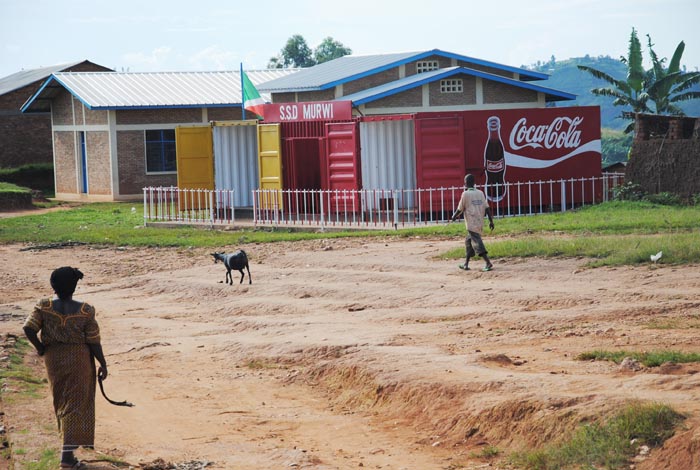
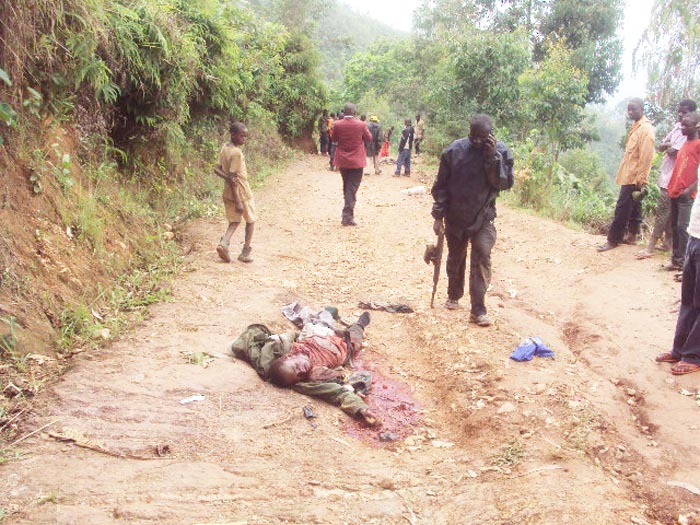
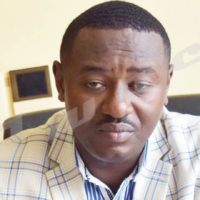
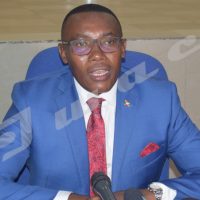
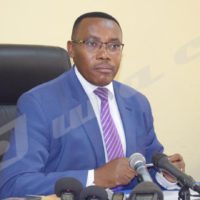
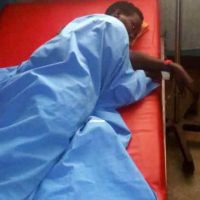
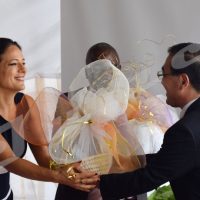













 IWACU Open Data
IWACU Open Data

